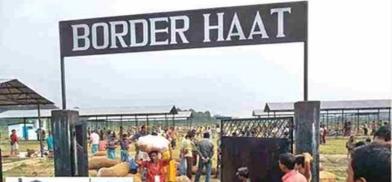From “land-locked” to “land-linked”: Reimagining Bangladesh-Northeast India ties
The concept of 'land-link' has already become operational. Credit is due to Bangladesh and its young foreign minister of state, Shahriar Alam, who has given a new dimension to ties between Northeast India and Bangladesh by showing the immense potential that can be exploited between the two countries by turning limitations into possibilities.

In April's second week, the Shillong-based Asian Confluence organized a dialogue in Agartala, Tripura, a northeastern state of India, titled “North East India, Bangladesh and the Bay of Bengal in the Indo-Pacific Building on Partnership: The Way Forward”. The central focus of the dialogue was to explore how the under-construction Matarbari Port in the Bay of Bengal could enhance business connectivity between Bangladesh and India's northeastern region under the current Indo-Pacific strategy.
The Matarbari Port is being constructed with Japanese investment which aims to foster connectivity, empower human resources, develop natural power, and promote environment-friendly economic activities in Northeast India and Bangladesh. Additionally, Northeast India, being a landlocked region, requires the facilities of the existing ports of Bangladesh. In this context, the Matarbari Port can be a game-changer for Northeast India.
At the inaugural session, Shahriar Alam, Bangladesh's Minister of State and Foreign Affairs, changed the traditional thinking by calling Northeast India a "land-linked" region rather than a "landlocked" one. The distinguished chairpersons of every session, including former ambassadors Riva Ganguly Das, Deepa Gopalan Wadwa, and Rajiv Bhatia, repeatedly highlighted the importance of Shahriar Alam's remark. This shows how the concept of connectivity is evolving, and the term "land link" is becoming more relevant today.
Though sea routes remain a cheaper option for transporting goods, the idea of land connectivity between countries or areas is gaining popularity. With the advancement of science and technology, land, water, and air transportation have become more or less equivalent to connectivity. Even the World Bank's studies emphasize the importance of land-linked connectivity between African land-linked countries. In the last two decades, the thinking of land connectivity between land-linked countries has grown significantly in Asia and Africa. The process is currently working in some African countries with the help of the World Bank.
Building border economies
Connectivity has always been an essential element in the development of civilizations, encompassing aspects beyond the mere transportation of goods and people. Connectivity involves a range of factors, including culture and economy. With the advent of high-speed train technology and sustainable road construction materials, the establishment of super rail and road networks between land-linked countries has become increasingly feasible. As the world moves towards a cheaper green-energy era, most development organizations emphasize land connectivity alongside waterways. This is exemplified by China's Belt and Road Initiative, through which they have connected with numerous neighboring countries. Bangladesh has also accepted this initiative, making land-link connectivity a future reality for the country.
To establish this connectivity, it is essential to consider aspects beyond transportation. Every land-linked country must build a border economy, for which they must first ease up on their border system. While the European Union has made it through an economic union, land-linked countries can easily make an easy border system through mutual understanding and relations without creating such a Union. Accessibility of goods carrying, people's movement, and an easy monetary system are two critical factors in this regard. Two countries can easily create a unique monetary exchange system.
Furthermore, joint industries are essential to sustainable connectivity between land-linked countries. Many countries like Thailand and Myanmar have established food products, textiles, and necessary industries in their border area in joint ventures. Kazakhstan and China produce oil and gas in joint ventures in their border area. In Africa, Zambia and Congo have also established joint venture industries on the border. For these ventures to be successful, a highly trained workforce is crucial. As joint ventures develop and spread, it is necessary to build on the people of the area to think of the profit of both countries, leaving behind any narrowness regarding their own country's benefit.
Cross-border education initiatives
Liberal attitudes can be fostered through formal education, which has already begun in many countries. The Education for Development Foundation in Thailand, for instance, is working to support Laos and Cambodia. At the same time, the Central Asian University Association has launched a cross-border educational initiative that brings together universities from Kazakhstan, Kyrgyzstan, Tajikistan, and Uzbekistan.
To be successful, cross-border education initiatives must incorporate the cultural traditions of both countries. Fortunately, this is easy, as cultures along border areas are often similar.
The concept of 'land-link' has already become operational. Through practice, countries will discover what they need to do in the future. The establishment of a cross-border education system is an ongoing process that will improve continuously through experience and the addition of new components to meet changing demands. Credit is due to Bangladesh and its young foreign minister of state, Shahriar Alam, who has given a new dimension to ties between Northeast India and Bangladesh by showing the immense potential that can be exploited between the two countries by turning limitations into possibilities.
(The author is a senior journalist based in Dhaka, Bangladesh, and a recipient of the Ekushey Padak, the highest state award. Views are personal. He is available for contact at swadeshroy@gmail.com. )










Post a Comment